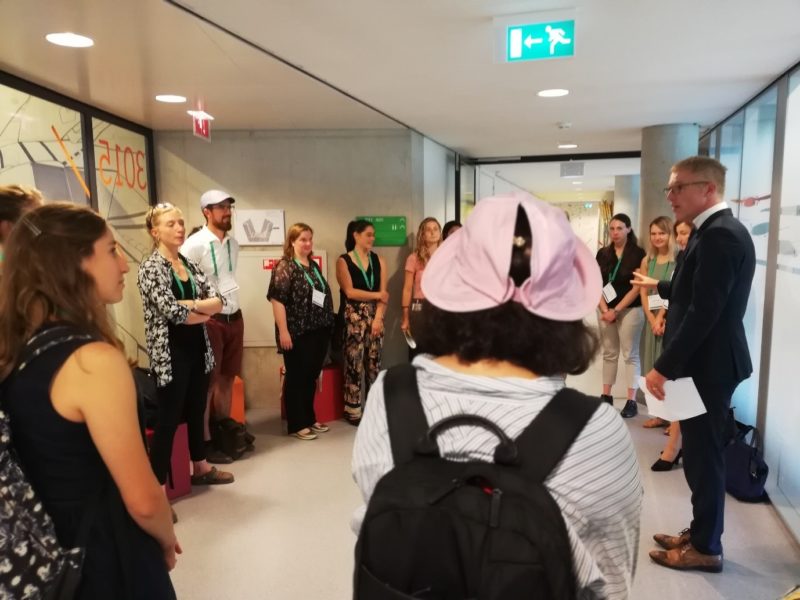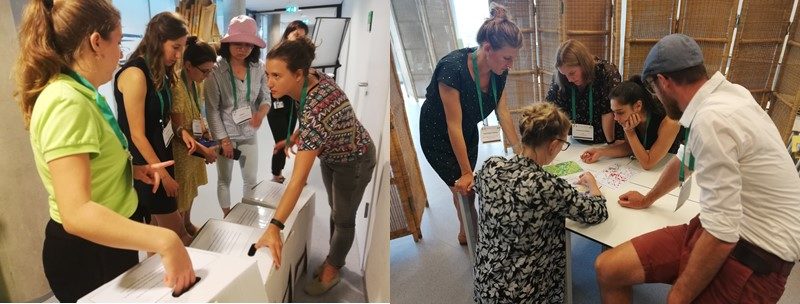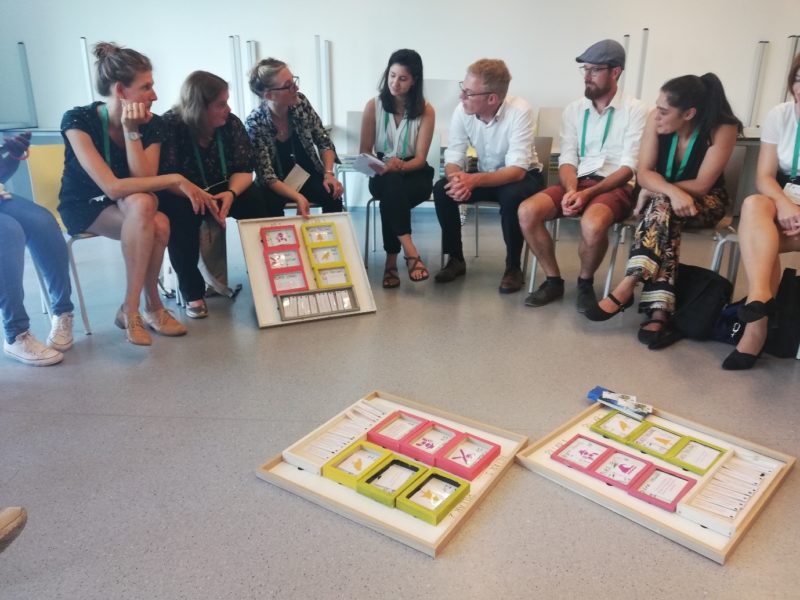Brussels returns to business this week, but slowly from the perspective of deciding on the shape of the CAP post 2020. COMAGRI is scheduled to meet on Wednesday 4 September to discuss the Union’s general budget for the financial year 2020. Also on the agenda is an item “Approval of recommendations from AGRI Coordinators” which may reveal how the Committee plans to proceed with the CAP post 2020 files.
The choices range from endorsing the work of the previous Committee and forwarding its Reports to the new Parliament for adoption, to starting afresh to re-examine the Commission’s proposal. According to Euractiv reporting in late July, the AGRI Coordinators are leaning towards a middle way, resubmitting the Reports to the Committee and keeping them open to new amendments but without radical changes (though its not clear to me how that would be enforced). Perhaps we will find out on Wednesday what the Committee proposes to do.
On the Council side, the AGRIFISH September Council meeting has been cancelled (instead, an informal Council will be held later in the month), so the Council has no formal meeting between July and October. The Finnish Presidency may feel there is little point in investing further energy in discussing the Commission’s post 2020 CAP proposals until it becomes clearer what the EP AGRI Committee proposes to do. Waiting for the views of the next Commissioner who will not be confirmed until the end of October and for the prospects for an agreement on the next Multi-annual Financial Framework at the October European Council meeting may be other explanations for the Council go-slow even if technical work continues in the Council Working Groups.
Thus, at the moment, the legislative process is just marking time on the Commission’s post-2020 CAP proposal. One consequence is that the deadline set out in the draft CAP Strategic Plans Regulation that Member States should forward draft Strategic Plans to Brussels by the end of this year to allow approval in the first half of 2020 looks hopelessly unrealistic.
The process of developing a Strategic Plan begins with two steps. First, a SWOT analysis must be prepared based on an assessment and prioritisation of needs. Even if draft SWOT analyses are prepared by a research institute or consultancy firm, they must involve and allow for feedback from stakeholders through various mechanisms. Second, an ex ante evaluator must be chosen who is required to appraise the assessment of needs including the procedures used to involve stakeholders.
There seems to be little information publicly available on where Member States are with these steps. The European Network on Rural Development organised a training seminar in October 2018 on ‘Key steps for CAP strategic planning’ and the European Evaluation Helpdesk for Rural Development organised one in March 2019 on ‘Getting prepared for the ex ante evaluation of the CAP Strategic Plan’. The Helpdesk has also created a Thematic Working Group to support evaluation stakeholders in preparing for the ex ante evaluation of the CAP Strategic Plans (this work is described in the July 2019 edition of Rural Evaluation News). One assumes there is also regular contact between the national contact points and Commission officials to provide technical support to the process.
But publicly, information on the state of play of preparations for CAP strategic planning is very scarce. For example, searching for relevant phrases in German or French on the German and French Ministry of Agriculture websites throws up no relevant hits, even if Germany which has asked the Von Thünen-Institut to prepare a draft of its SWOT analysis seems to have made some progress.
It would be very helpful to follow this process if some pan-European group with the necessary resources and correspondents in each country might offer to host a website where each country’s steps towards preparing its Strategic Plan could be documented.
Stakeholder involvement in developing Strategic Plans
One of the things Managing Authorities must do is to define the stakeholder engagement strategy when drawing up their Strategic Plan. For example, stakeholders can be asked to sit on the Steering Committee, to respond to a public consultation, or to take part in thematic working groups or in focus groups.
I took part in a potential engagement tool at Wageningen University last week. This was an ‘escape room experience ’ organised as a Master Class at the fourth annual Wageningen Soil Conference. It turned out that many of the 15 participants had previously participated in escape room experiences but for readers who, like myself, have never done so, let me briefly explain the idea.
In an escape room experience, teams of participants work together to solve puzzles to allow them to proceed through and eventually ‘escape’ from the room within a given time, in this case 60 minutes. The purpose of the Wageningen escape room was to combine interactive puzzle-solving with the educational objective to introduce participants (in this case, participants in a soils conference) to some of the ideas behind a more performance-based CAP based on strategic planning.
Participants were initially welcomed by ‘Commissioner Hogan’, theatrically portrayed by Professor Rogier Schulte who had conceived the Master Class. He took 10 minutes to explain the background to the CAP and the changes that the Commission had proposed to make in the policy for the period after 2020. Participants were asked to identify themselves as national policy-makers with the objective to design their country’s CAP Strategic Plan (for the sake of time, the game focused on the three environmental and climate specific objectives out of the nine put forward for the next CAP). Participants had to move through five rooms in all, finally escaping when their Strategic Plans were complete.

I don’t want to create spoilers and describe the puzzles the teams were asked to solve. Suffice to say that the first room introduced players to the SWOT analysis, the next room to the needs assessment, the next room to the choice of appropriate interventions, the next room to the allocation of funding to various interventions including the balance between Pillar 1 and Pillar 2, while in the final room each team assembled its Strategic Plan. The puzzles, props, maps, video sequences and other paraphernalia that helped (or hindered!) the teams to escape were brilliantly conceived and designed by Mariana Debernardini (Mariana takes up a job as a Sustainability & Research liaison for the European Council of Young Farmers (CEJA) in Brussels this week). To my surprise (as I had thought some of the puzzles would prove quite difficult), each of the three teams escaped from the room with a completed Strategic Plan and each with just a couple of minutes to spare.

The second part of the Master Class was the debriefing where participants had the opportunity to ask questions and to reflect on their experiences. For some (if not many) of the participants, the escape room had been largely about the puzzle-solving, so the debriefing was an opportunity to highlight the insights and lessons learned and thus was an essential part of the experience.

Many of the questions which have surfaced during the legislative process following the publication of the Commission’s proposals were also raised in the debriefing. How would performance and impact be measured? What would be the incentives to pursue ambitious Plans? One observation was that the teams designed their Strategic Plans in the later rooms largely based on their own personal assessment of what were the important priorities, without referring back to the insights from the SWOT analysis identifying the country’s strengths, weaknesses, opportunities and threats. I suspect that this is not unusual and will also be the case when stakeholders meet in reality to discuss the draft Strategic Plans.
Using a game to get stakeholders talking to each other requires a certain level of investment but it may be something some Managing Authorities might wish to consider when planning their stakeholder engagement. If so, I can strongly recommend drawing on the experience of the Wageningen team.
Update 5 Sept 2019: A reference to the informal AGRIFISH Council in late September has been included.
This post was written by Alan Matthews


